
| Thorsborne Trail - Hinchinbrook Island |
Getting There |
|
  |
|
|
||
 About to set off from Hinchinbrook Marina |
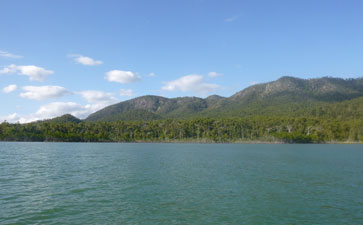 The forest-fringed edge of Hinchinbrook |
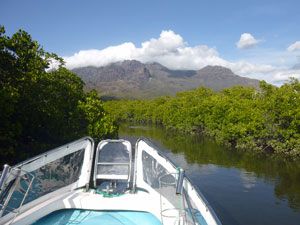 Passage into the mangrove swamp |
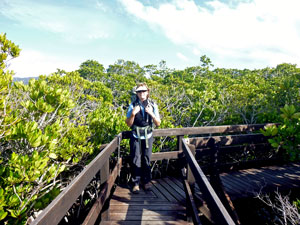 The boardwalk through the mangroves |
|
 On the beach at Ramsay Bay - ready to set off |
 Heading south towards Nina Peak and Mt Bowen |
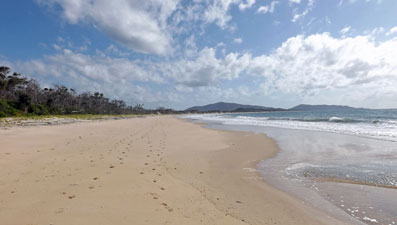 Looking back along the broad sandy beach of Ramsay Bay |
|
|
|
 Black Sand Creek ..... |
 ... and its deep sandy mouth lined with giant paperbarks |
|
|
|||
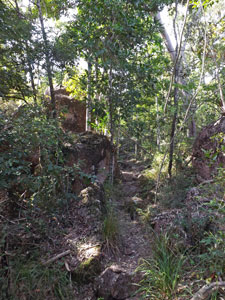 Into the rain forest ... |
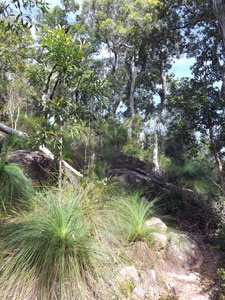 ... followed by drier sclerophyll .... |
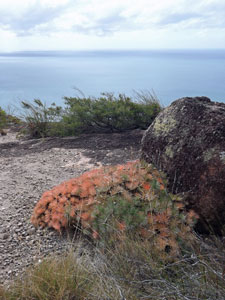 .... and rocky heath |
 View from the climb up Nina Peak |
|
||
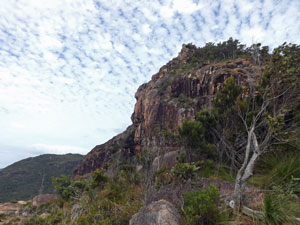 The sheer face of Nina Peak |
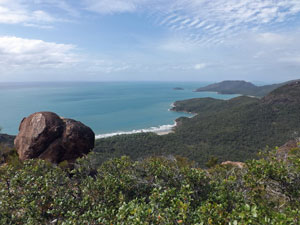 The route ahead - Nina Bay from Nina Peak |
 Channels in the mangrove swamps of north Hinchinbrook |
|
||
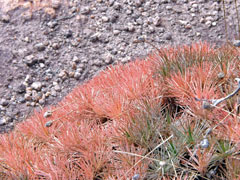 |
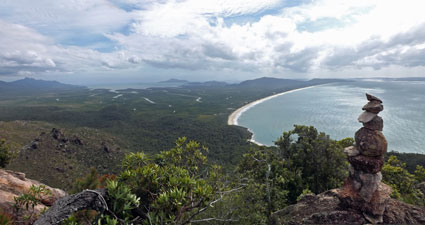 View north from Nina Peak over Ramsay Bay |
 |
|
|
|
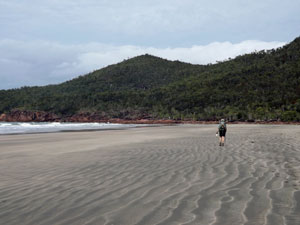 Crossing the wave-rippled beach of Nina Bay |
 Pink boulders on Nina Beach |
|
|
|
 Forest and mountains backing Nina Bay |
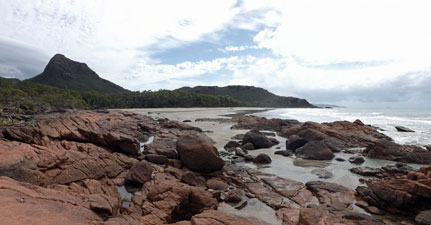 Nina Peak rises high above Nina Bay |
|
|
|
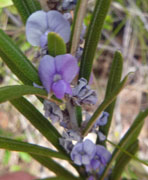 |
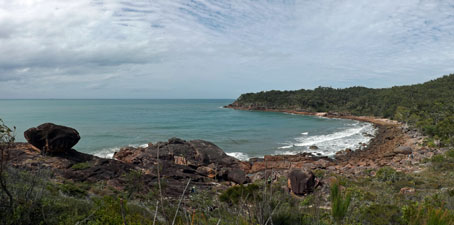 Looking down onto Boulder Bay |
|
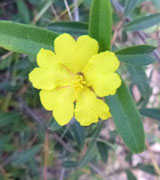 |
|
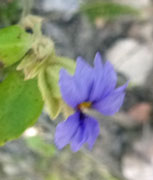 |
 Little Ramsay Beach next to the campsite |
 Tidal sculpture |
|
|
||
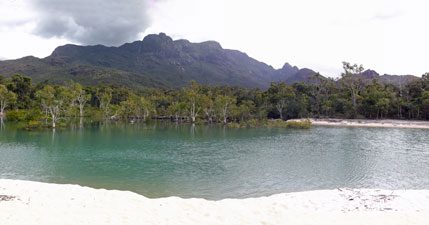 Little Ramsay Lagoon and Mt Bowen |
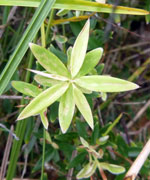 |
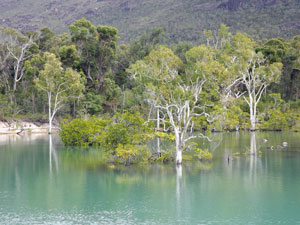 The beauty of the lagoon |
|
|
|
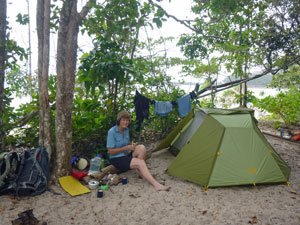 Campsite at Little Ramsay |
 Time to relax a little |
|
|
Now we could brew a cuppa, followed by a swim in the calm refreshing water of the lagoon. The wind had dropped to a breeze and the sun had broken free of the cloud for a perfect end-of-day relax in this delightful spot, wedged between the Coral Sea and the rugged peaks of Hinchinbrook.
|
|
|
|
|
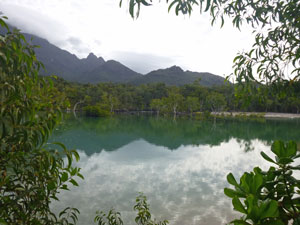 The lagoon from the campsite - by day .... |
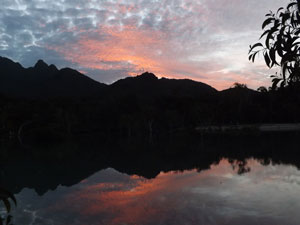 .... and at sunset |
|
|
  |
Little Ramsay Bay to Zoe Bay (11.5 km - 150m ascent - 150m descent) |
|
|
|
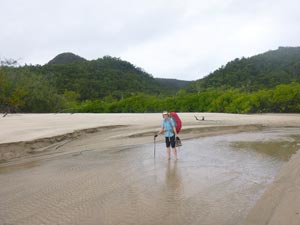 The sort of river crossing we like |
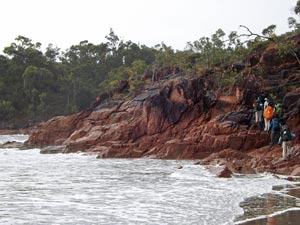 Climbing up onto the red rock headland |
 Rain out to sea |
|
|
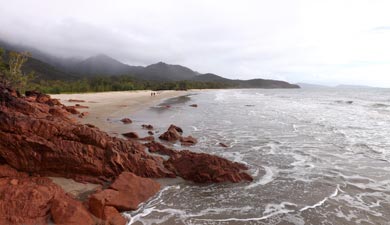 The rocks of Little Ramsay |
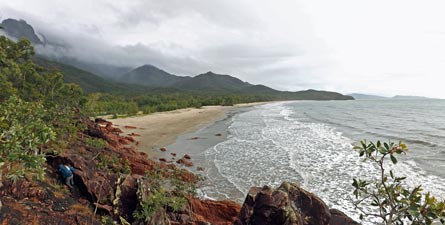 View back over Little Ramsay Bay from the headland |
|
|
|
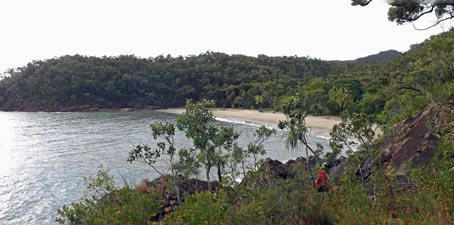 Descent to Banksia Bay
|
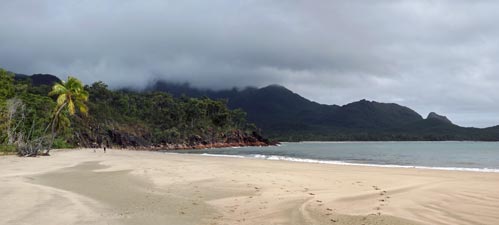 Cloud-covered mountains framing the beach at Banksia Bay |
|
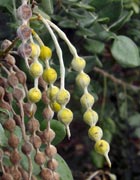 |
 The lagoon at Banksia Bay |
|
|
|||
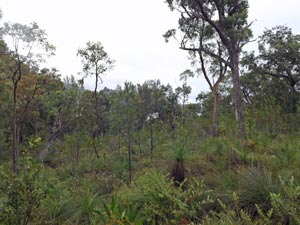 Scrubby heathland on the saddle |
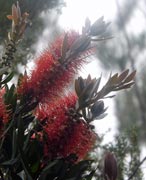 |
 |
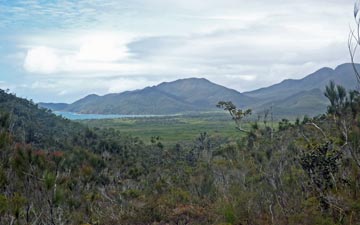 View over the rainforest flats and Zoe Bay |
|
|||
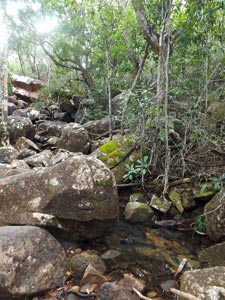 Big boulders in the descent gully |
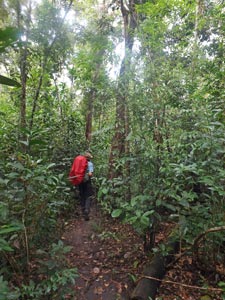 Nello adds a touch of colour to the greenery |
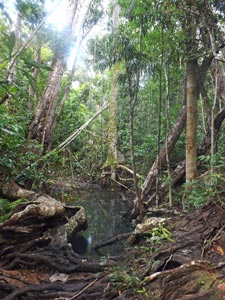 In the lowland rain forest |
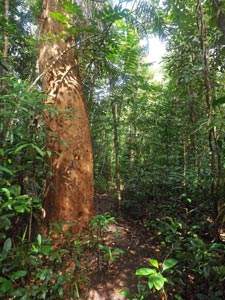 Orange-barked giant in a sea of green |
|
||
 In the more open paperbark swamplands |
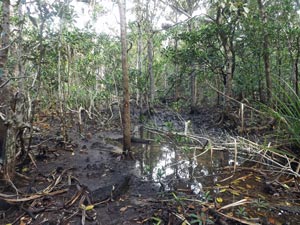 Mud, mud mud ..... where I filled my boot with mud |
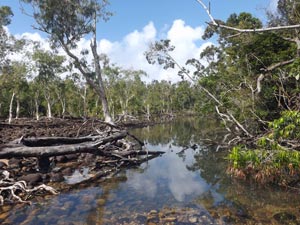 The setting of North Zoe Creek |
|
|
|
 |
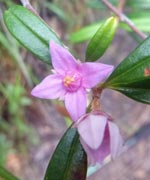 |
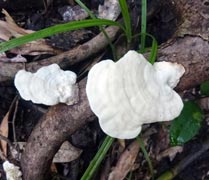 |
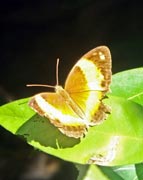 |
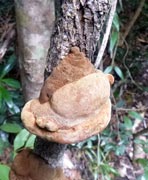 |
|
|
|
|||
|
||
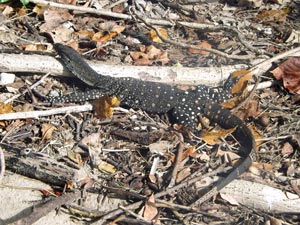 The camp goanna |
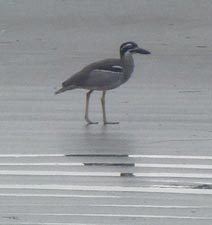 |
 A sheltered spot in the coastal forest |
|
||
 The lovely green pool of Zoe Falls |
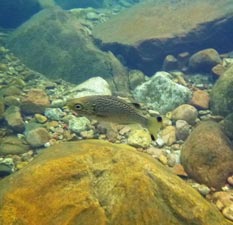 |
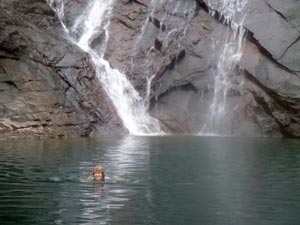 Time for a refreshing swim |
|
    |
Zoe Bay to Mulligans Falls (6.5 km - 310m ascent - 310m descent) |
|
|
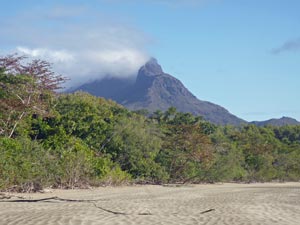 Mt Bowen with its plume of cloud |
 Sunny morning at Zoe Beach |
|
|
|
 Farewell to Zoe Falls |
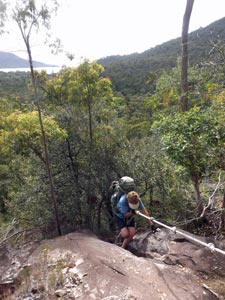 A bit of ropework on the climb to the top of the falls |
 Looking up the rocky bed of South Zoe Creek |
|
||||
 |
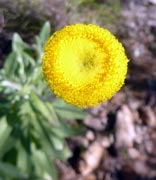 |
 Pool at the top of Zoe Falls and Zoe Bay |
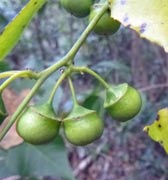 |
 |
|
||
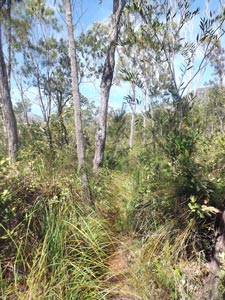 On the somewhat overgrown track |
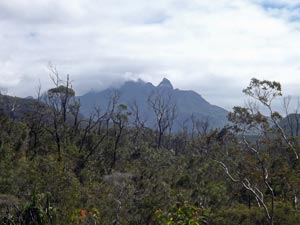 A final glimpse of Mt Bowen above the heath |
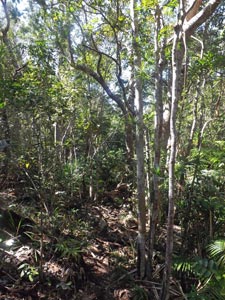 Back into the rain forest on the southern slopes |
|
||
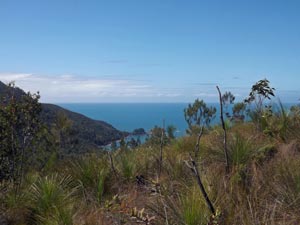 The blue of the Coral Sea |
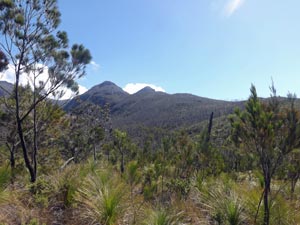 Looking inland toward Mt Diamantina |
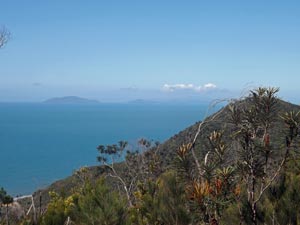 The Palm Islands on the horizon |
|
||
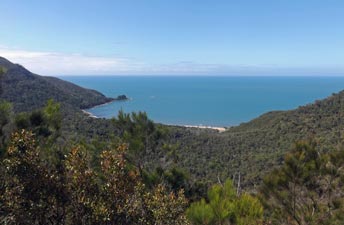 Looking down to Shipwreck Cove |
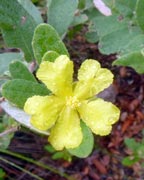 |
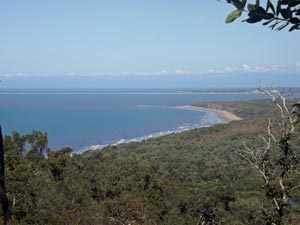 View south towards the mainland |
|
|
|
 |
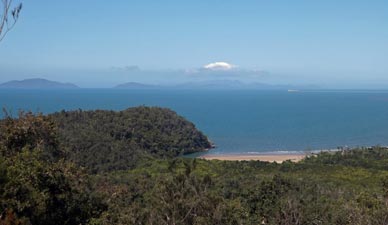 View out over the Coral Sea and the Palm Islands |
|
|
|
|
||
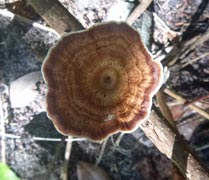 |
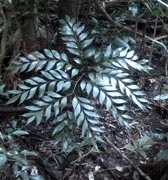 |
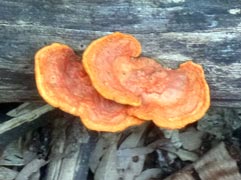 |
|
|
|
|
|
            |
Mulligans Falls to Georges Point (6.5 km - 10m ascent - 30m descent) |
|
|
|
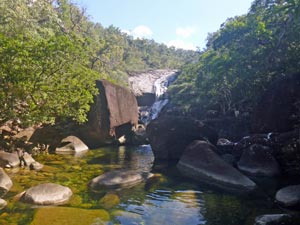 The upper pool |
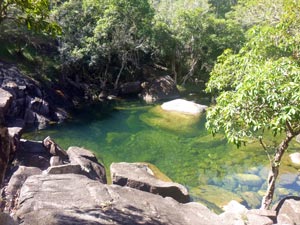 Sunlight on the lower pool |
|
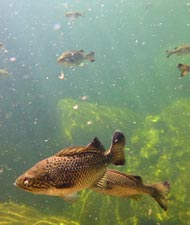 |
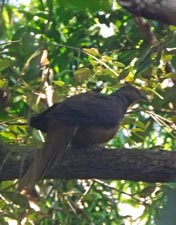 |
|
|
|||
 A last walk in the rain forest .... |
 ... past one creek .... |
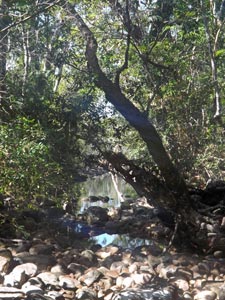 .... and another .... |
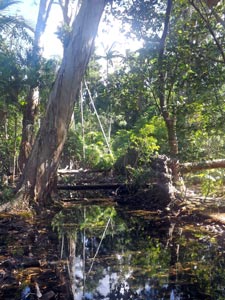 .... and another |
|
|||
 Reaching the beach at last |
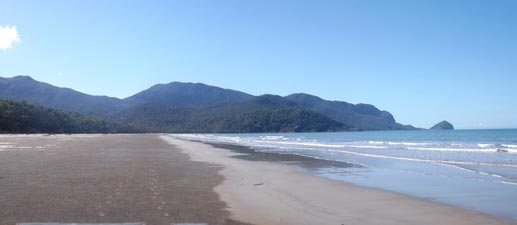 Looking north along Mulligans Bay |
|
|
|
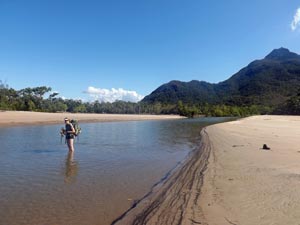 Crossing Mulligans Creek (not as deep as expected) |
 The mouth of Mulligans Creek |
|
|
||
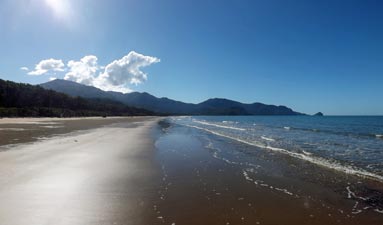 Afternoon light on Mulligans Beach |
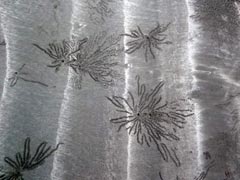 |
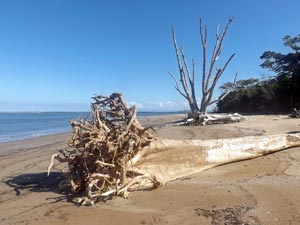 Trunks of trees ripped out by Cyclone Yasi in 2011 |
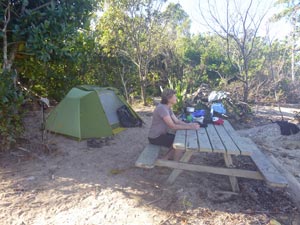 Beach campsite at Georges Point |
 Sea-horse driftwood |
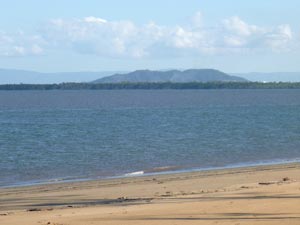 Looking over Hinchinbrook Channel to the mainland |
|
||
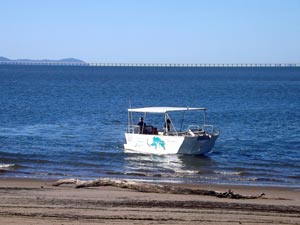 The ferry arrives to take us back to the mainland |
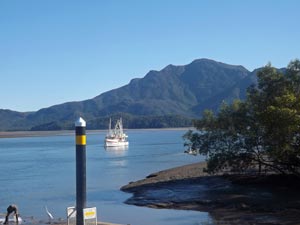 Hinchinbrook Island from Lucinda marina |
|
|
  |